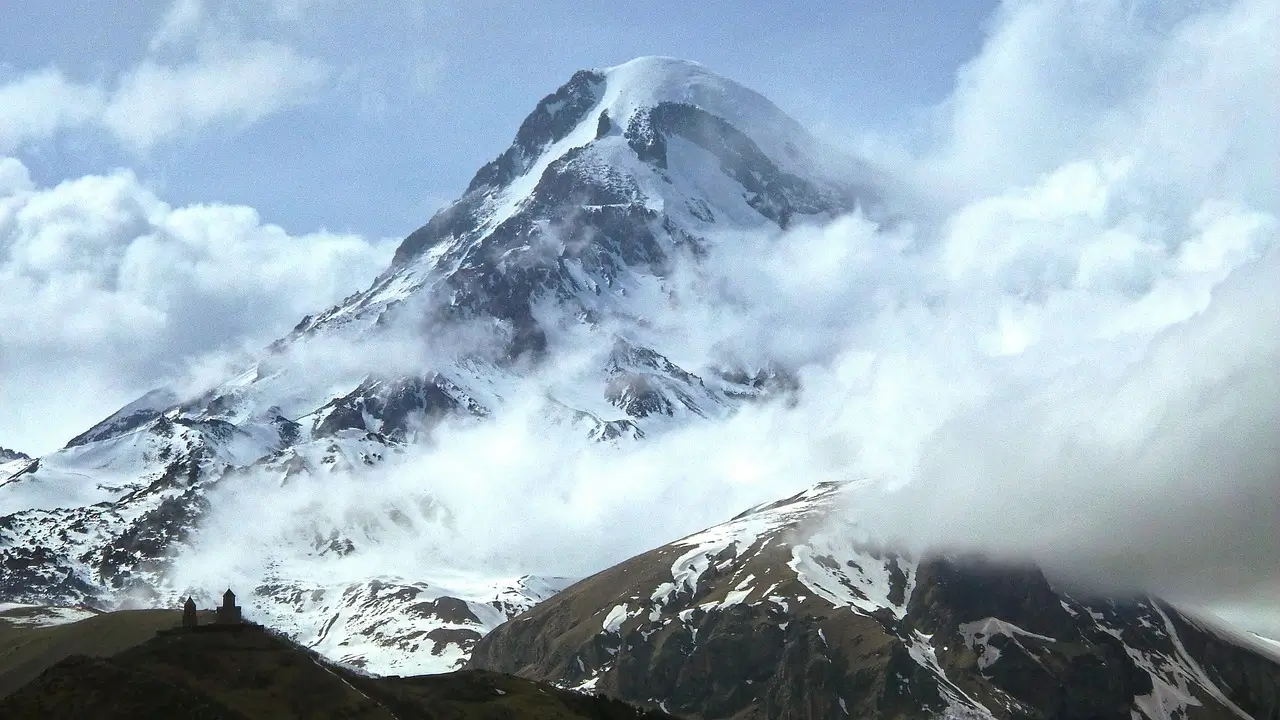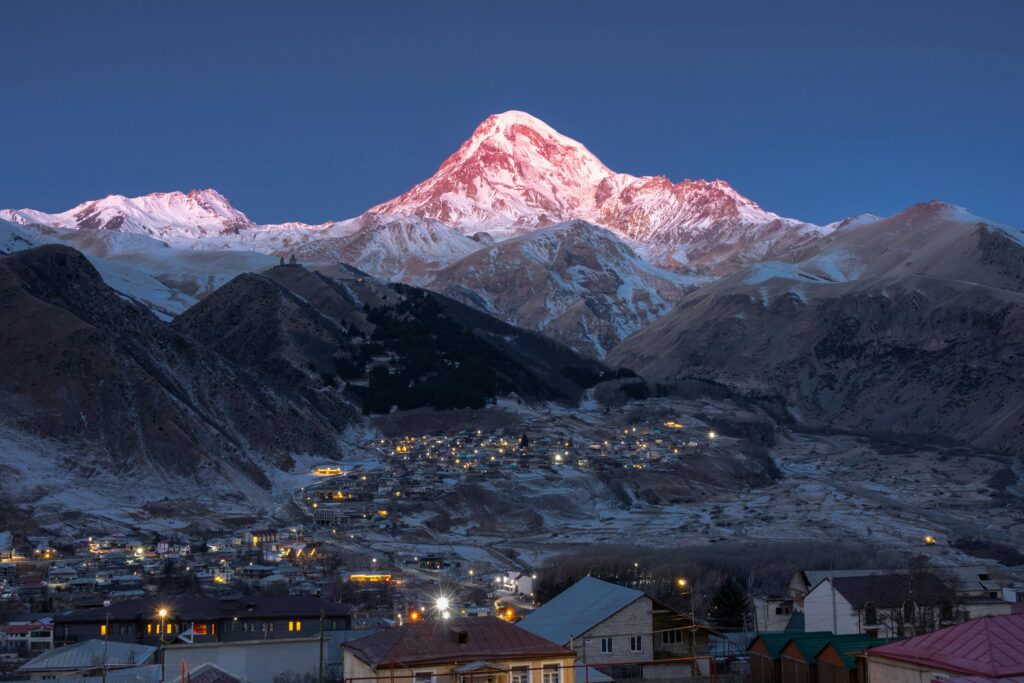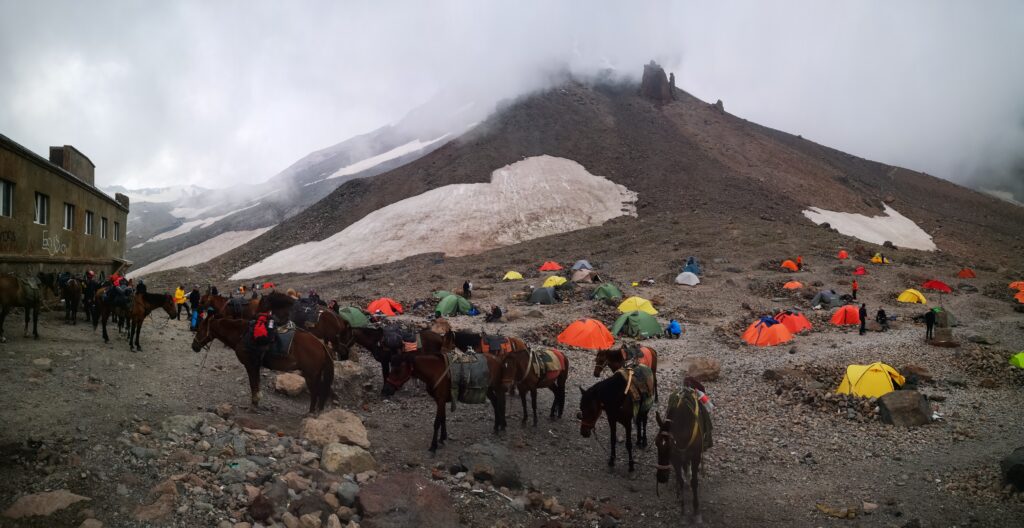5 Reasons to Climb Mount Kazbek in Georgia
Where ancient volcanoes meet timeless Georgian spirit

Snow-covered Mount Kazbek
If you’re planning your next expedition and looking beyond the usual suspects, here’s why Mount Kazbek in Georgia should be on your radar.
1. A Gateway to High-Altitude Climbing Without the Crowds
There are plenty of 5,000-meter peaks in the world, but very few combine accessibility, solitude, and technical value like Mount Kazbek. With an altitude of 5,047 meters, it presents a real alpine environment: glacier crossings, rope team navigation, steep icy slopes, and rapid altitude gain.
Mount Kazbek difficulty is typically rated moderate to challenging, depending on the season and conditions. While not overly technical, it demands solid fitness, basic glacier travel skills, and a respect for the unpredictable weather common to the Caucasus.
🧗♂️ Climber tip: The most common ascent is via the Bethlemi Hut route. It’s suitable for mountaineers with experience using crampons, ropes, and ice axes – and is often used as a prep climb before heading to higher or more complex summits like Elbrus or Denali.
📅 When to climb Mount Kazbek: The best climbing season runs from mid-June to mid-September, when weather conditions are most stable.
2. A Wild, Underrated Peak with No Bureaucratic Baggage
Compared to the climbing permit chaos of Nepal or the red tape around Pakistan’s 6,000ers, Mount Kazbek is refreshingly straightforward. There’s currently no formal permit system for independent climbers, and the region welcomes both guided and self-sufficient expeditions.
📍Where is Mount Kazbek? It’s located in northern Georgia, in the Kazbegi region, just a 3–4 hour drive from Tbilisi. The nearby mountain village of Stepantsminda serves as the ideal basecamp hub – with guesthouses, gear rental shops, and local guides familiar with the mountain’s moods.

3. A Serious Test of Acclimatization Strategy
If you’re looking to sharpen your high-altitude instincts, Kazbek delivers. One of the most underrated reasons to climb this peak is how much it teaches you about acclimatization – fast. With most expeditions starting around 1,700 meters and aiming for a summit above 5,000, you’re entering thin air quickly. That makes it more than just a scenic climb – it’s a personal laboratory for testing how your body handles altitude.
This kind of rapid elevation gain isn’t something you get on more gradual climbs like Kilimanjaro or during longer Himalayan treks. On Kazbek, the effects of altitude hit early, which makes it a powerful prep climb for those eyeing bigger expeditions. You’ll learn how your body responds, how to adjust your pace, and how important it is to listen to early warning signs of AMS.
🧠 Why it matters: Success on future climbs often depends on your ability to acclimatize efficiently. On Kazbek, you get to refine that skill in a condensed, high-stakes setting – without needing weeks off or international permits.
📌 We recommend checking detailed acclimatization advice from reliable climbing organizations or local guides

4. Volcanic Drama & Glacier Adventure
Mount Kazbek isn’t just high – it’s geologically fascinating. It’s a dormant stratovolcano, part of the volcanic arc that shaped the Caucasus. Beneath your crampons lies a long-frozen landscape shaped by fire: lava flows, ash beds, and ancient geothermal vents.
The southern route includes crevasses, seracs, and a climb over the Gergeti Glacier – a mix of snowfields and icefall sections that keep you sharp. This isn’t a stroll up a scree slope; it’s a proper mountaineering objective.
🌋 Did you know? While it hasn’t erupted in modern history, thermal activity still bubbles beneath Kazbek – fueling mineral springs and hot spots around the region.

5. A Climb That Combines Alpine Challenge with Cultural Hospitality
Mount Kazbek isn’t just a mountain – it’s an experience steeped in Georgian warmth. From the moment you arrive in Stepantsminda, you’re welcomed into a unique blend of high-altitude adventure and local culture. Guesthouses offer hearty traditional meals like khinkali and khachapuri, while local guides bring not just mountain expertise but also deep knowledge of the land’s history and traditions.
This is where alpine ambition meets genuine hospitality – and that’s rare. You’ll train your body on glaciers by day, and unwind with local wine and stories at night. It’s the kind of expedition that strengthens your mountaineering skills and leaves you with lasting connections.
Final Thoughts: Kazbek Is More Than a Peak – It’s a Proving Ground
For climbers looking to train, test, or simply explore beyond the mainstream, Mount Kazbek in Georgia offers everything you’d want from a serious alpine experience – without the fuss. It’s wild, it’s raw, and it’s real mountaineering.
Whether you’re chasing your first 5,000er or building up to tougher climbs, Kazbek offers more than elevation – it offers transformation.
